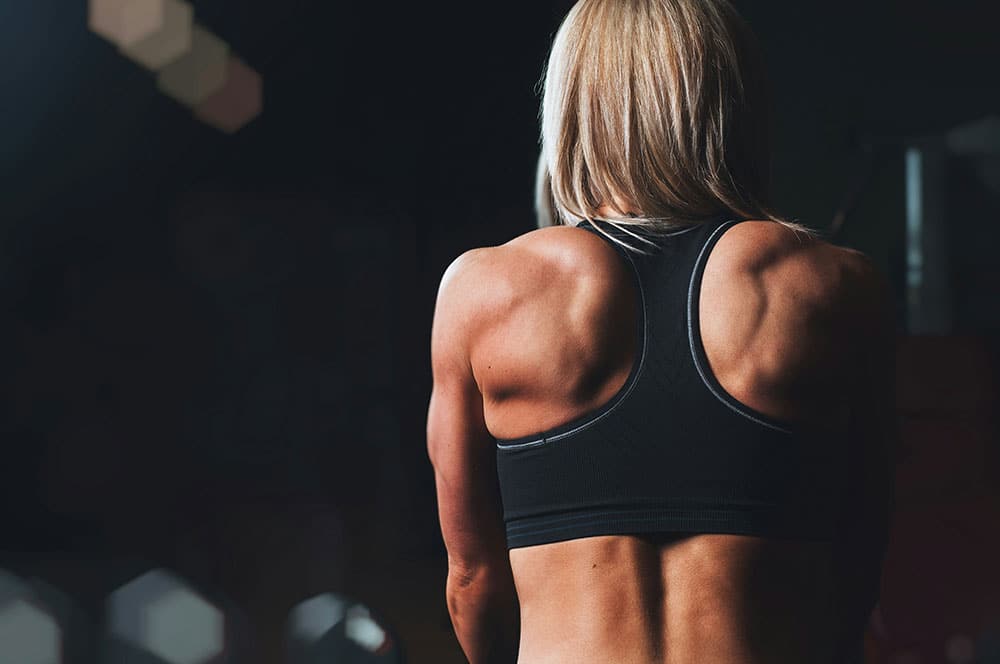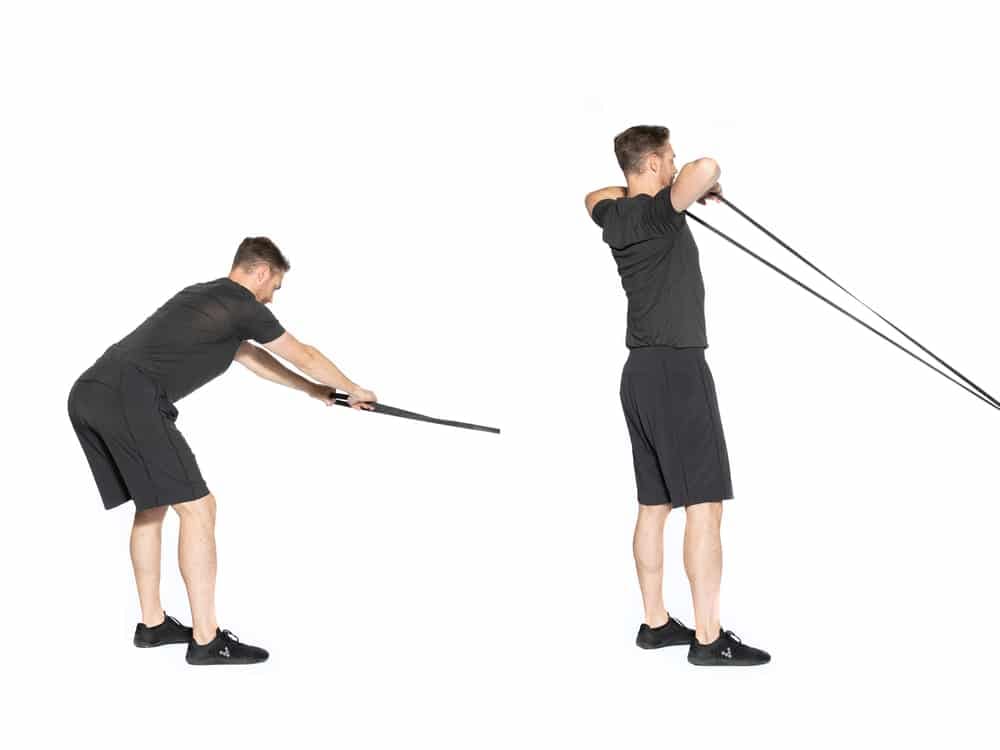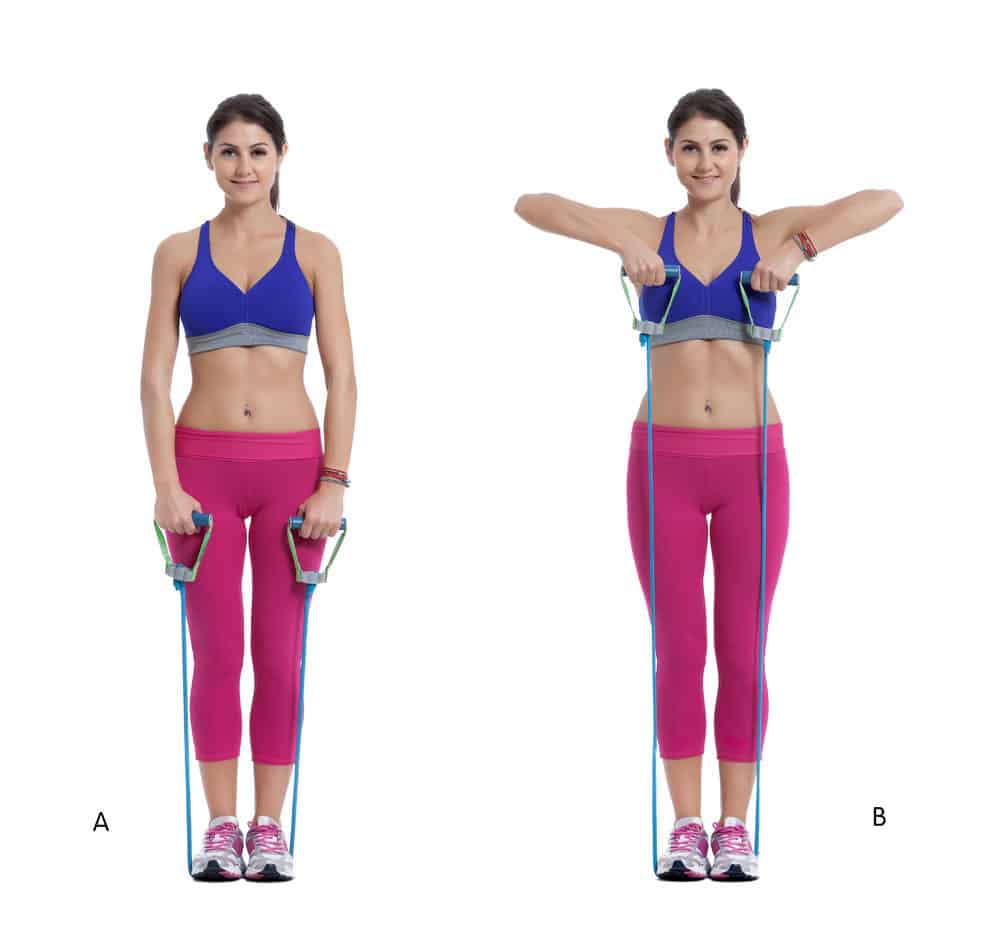The 4 Best Shoulder Cable Workouts for Huge Shoulders
Learn how to perform shoulder cable workouts to grow your shoulders. Get to know shoulder anatomy & targeted workouts for shoulder growth.
Great upper body workouts don't just come from the weight rack. It can often feel exhausting lugging heavy dumbbells around day in and day out. If you feel like your workouts are getting a little stale, shoulder cable workouts may be something to add to your repertoire to spice things up.
Let's get to know the top shoulder cable workouts for a strong, defined upper body.
Benefits of Shoulder Cable Workouts
More Time Under Tension
Compared to dumbbell or barbell workouts, cable workouts create constant tension on your muscles.
Since they are not attached to elastic bands for resistance, a barbell or dumbbell allows you to create a “break” in your resistance application.
Using cables keeps the tension constant. If you’re looking for more time under tension in your workouts, using cables to perform resistance band exercises is the best way to create this type of muscular engagement.
Controlled Movement
Because they apply continuous tension, cables can feel like a much smoother lift for a lot of people.
A banded or cabled lift doesn’t allow you to swing a weight through the air or rely excessively on momentum to complete a rep. Instead, you need to be able to move smoothly through your full range of motion during a cable exercise.
Adjustability
Cable workouts in general are a great way to switch up your angles to emphasize different muscle groups in your workout routine.
Some research indicates that the changes in angle that cable machines offer for your joints may make them more effective than traditional weights for certain highly targeted training moves.
You can learn more here: Differences in Muscle Activation Between Cable-Based and Weight Training.
Most cable pulley machines have many different anchor points. You can use these to adjust the cables to suit your height or just to put more work into different muscle groups. It’s a good idea to experiment and see which cable pulley placements work best for you.
Can Translate to Home Workouts
If you’re looking to build out a home gym, a cable pulley machine is one of the most versatile pieces of equipment you can invest in. Machines typically start at around a $1500 price point, but there are many more affordable used options available on Kijiji or Facebook marketplace.
To boot, resistance bands are often an easy replacement for a cable pulley machine. Resistance bands work your muscles in the same way, emphasizing more time under tension and more fluid, consistent movement patterns.
These pieces of equipment both create what is called “elastic resistance.” Although some weightlifters don’t believe you can get as strong with elastic bands vs. weights, there is some evidence that both techniques can produce similar strength gains.
To learn more, you can read about the Effects of Training with Elastic Resistance Versus Conventional Resistance.
And these are cheap! You can pick up a set of resistance bands for often as low $2.00 at your local dollar store. Just make sure you have a solid anchor point for resistance bands and you can sub them in for cable workouts. You can even perform squats and deadlifts with resistance bands and a little creativity.
Muscles Worked

Deltoids
- Front Delt: The anterior deltoids, aka “front delts” sit at the front of your shoulders. These muscles help you to lift your arms straight out in front of you.
- Mid Delts: Your middle deltoids can also be referred to as “medial deltoids,” “lateral deltoids,” or “side delts.” These names all refer to the same muscles, which sit in between your anterior and posterior deltoids. They help you to lift your arms out to the side.
- Rear Delts: Posterior deltoids, aka “rear delts” are the muscles at the backs of your shoulders. They help you to lift your arms behind your body.
Take a look at these guides to discover more about deltoids:
- Anatomy, Shoulder and Upper Limb, Deltoid Muscle
- Anatomical and Functional Segments of the Deltoid Muscle.

Trapezius
- The trapezius muscles aka “traps” are long, trapezoidal muscles that extend across your shoulders and back. They span from your neck, out across the tops of your shoulders, down your back to anchor at the middle of your back (thoracic spine).
- The traps support your posture, but also help your shake your head “yes” and “no,” bend laterally from your upper back and lift and lower your shoulders. These muscles also help with internal rotation of your arms and retracting your shoulder blades (pulling them together).
Rhomboids
- The rhomboids help attach the shoulder blades and upper arms to your ribcage. In terms of movement, the rhomboids help to retract (pull together), lift, and rotate your scapulae (shoulder blades).
Rotator Cuff Muscles
- Teres minor: This muscle helps you to keep your shoulder joint stable. It also assists with the lateral and external rotation of your arm from your shoulder joint.
- Subscapularis: Rotates your humerus (the upper arm bone) internally. It also helps to adduct your arm, meaning to bring it towards the midline of your body.
- Infraspinatus: This muscle primarily helps to rotate the humerus externally. This means it turns your arm away from the center of your body.
- Supraspinatus: This muscle helps move your arm upward and away from the body between 0-15 degrees of movement. After 15 degrees, the deltoid and trapezius muscles kick in. The supraspinatus continues to assist your deltoids in moving your arm for up to 90 degrees.
Shoulder Workouts— Cable
Face Pulls
A face pull shoulder cable workout is a great way to target the shoulder muscles and upper back with cables. To perform face pulls:
- Set-up: Start by attaching a rope or handle to a cable machine. Your attachment should sit at face height. Adjust the pulley to this level. Step back to stand a few feet away from your machine. You can also choose to kneel at the same distance away if it’s more comfortable, although you’ll need to adjust your pulley height accordingly.
- Grip and position: Grab your rope or handle with an overhand grip. Keep yours hands around shoulder-width apart. Step far enough back to put some tension in your cable. If you’re standing up, keep a slight bend in your knees.
- Movement: Extend your arms all the way. Pull the rope or handle towards your face by bending your elbows and squeezing your shoulder blades together.Your upper arms should stay parallel to the ground. Make sure you’re pulling directly towards your face (this can feel strange at first!). Think about externally rotating your shoulders.
- Return: Slowly reverse your movement. Extend your arms and slowly let the weight pull you back to the starting position. Work against the resistance to control the weight. Your cables should never be jerking your shoulders into position. Focus on engaging your rear delts and upper back muscles the whole time. Keep going for as many reps as you’d like. We’d recommend 3-4 reps of 8-12 reps for new lifters.

On upper body training days, you can combine weighted shoulder exercises like face pulls with bodyweight shoulder-burning moves like push-ups. This will help you feel the upper body burn.
Cable Lateral Raise
The cable lateral raise is one of the simplest exercises you can do with cables to target your side delts.
This exercise is a form of unilateral training. What is unilateral exercise? This means you train each side of the body independently. Right, then left, or vice versa. Unilateral exercises can help you to correct muscular imbalances.
Plus, training single-arm or single-leg movements can help to promote balance. It forces you to think about distributing your weight in a way that helps you balance while supporting yourself with only one side of your body.
To learn more about unilateral training, you can read: Effects of Unilateral vs. Bilateral Resistance Training.
To perform this exercise:
- Set-Up: Find a cable pulley machine and attach a D-handle or any small triangular handle that feels comfortable. Load a weight that feels comfortable yet challenging. Remember, you’ll need to be able to lift this weight with one arm.
- Body Position: Stand at least one foot from your cable pulley machine with your feet shoulder-width apart. Your left hip should face the side of the cable machine. You can hold onto the side of the pulley machine for support or bring your hand to your hip. Cross your right arm over your body to grasp your pulley handle. Hold it tight so you eliminate the slack from your cable. This is your starting position.
- Lift: Slowly bring your arm out to your side, resisting your weight to engage the side deltoid as you lift your handle up. Your extended arm should be perpendicular to your body.
- Reverse: Resist your weight on the way back as you bring your arm back to your side.
- Reps: Aim for 3-4 sets of 8-12 reps.

Cable Upright Row
Instead of using a barbell, why not swap out your upright row equipment for cables?
- Set-Up: Set yourself up in front of a cable pulley machine with a medium to heavy weight loaded onto your stack. You can attach an EZ bar or straight pulley handle to your machine, depending on what’s most comfortable for you. Make sure to position your pulley on the lowest attachment position possible.
- Body Position: Use an overhand grip to reach out and grab your cable handle with straight arms. Stand about one foot away from your pulley. Plant your feet hip-width apart for stability or in a comfortable stance.
- Row: Bend your elbows and start to glide your pulley handle up the front of your body, driving your elbows wide and to the sides. Your elbows should form a “T” shape with your body at the top of this move.
- Reverse: Resist your weight to bring your hands back and down to the starting position.
- Reps: 3 sets of 10-12 reps.
Pro-Tip: If you don’t have access to a cable machine, try this move with a resistance band. Simply stand on your band to anchor it, then drive your elbows upward to row. You’ll get a similar type of muscular tension with a band to match what you’ll get using cables.

Cable Shoulder Press
This is one of the all-time best moves you can do to counteract bad shoulder genetics. Shoulder presses are some of the best shoulder exercises for “boulder shoulders.” That’s no different, whether you do them with barbells or a cable machine.
- Set-Up: For this exercise, you’ll need two pulleys or two anchor points if you want to work both sides of your body at the same time, but you can also perform this move unilaterally. Set up your cable handles at the lowest attachment point possible on your machines. Use D-handles, if available.
- Body Position: Face away from your pulley and grab both handles, bringing them taut with an overhand grip. Bend your elbows to 90 degrees and bring your hands up near your ears, like you would to position a barbell for a shoulder press.
- Press: Press your arms up and overhead, driving your movement from your shoulders until your arms are fully extended. The hands should come out slightly wider than hip-width at the top of your movement.
- Reverse: Resist your weight and bend your elbows back to 90 degrees.
- Reps: Repeat for 3 sets of 10-12 reps, or as desired.
To learn another variation of this exercise without the cables, see: Military Press vs. Shoulder Press.
The Takeaway
Training with cables is a fantastic alternative to barbells and dumbbells for building strong shoulders.
Whether you want a side delt, rear delt, or front delt workout, cable pulleys are an eternally flexible option that lets you create a more sustained tension pattern to activate your muscles.
It can help you focus on stability in your movements and help you train around using momentum or jerky movements, which you often see with dumbbells or barbells.
Moves like cable upright rows, cable lateral raises and cable face pulls are all good options for growing and strengthening your shoulder muscles.
Make sure to recover properly. After a shoulder cable workout, stretch your shoulder muscles.
You can do this by pulling the shoulder of one arm across your body with your other arm for a stretch. You can also create circles with your shoulders or arms as a warm-up to get the muscles ready if you plan to lift heavy with your cables.

Remember to refuel after your shoulder cable workouts with some protein and make sure to stay hydrated during your exercise. This can help you increase both size and strength to get an aesthetic physique with big shoulders.
You may even be able to work around narrow clavicles for a broader, more harmonious upper body.
References
Liao, K. F., Nassis, G. P., Bishop, C., Yang, W., Bian, C., & Li, Y. M. (2022). Effects of unilateral vs. bilateral resistance training interventions on measures of strength, jump, linear and change of direction speed: a systematic review and meta-analysis. Biology of sport, 39(3), 485–497. https://doi.org/10.5114/biolsport.2022.107024
Lopes, J. S. S., Machado, A. F., Micheletti, J. K., de Almeida, A. C., Cavina, A. P., & Pastre, C. M. (2019). Effects of training with elastic resistance versus conventional resistance on muscular strength: A systematic review and meta-analysis. SAGE open medicine, 7, 2050312119831116. https://doi.org/10.1177/2050312119831116
Elzanie A, Varacallo M. Anatomy, Shoulder and Upper Limb, Deltoid Muscle. [Updated 2024 Jan 30]. In: StatPearls [Internet]. Treasure Island (FL): StatPearls Publishing; 2024 Jan-. Available from: https://www.ncbi.nlm.nih.gov/books/NBK537056/
Sakoma, Y., Sano, H., Shinozaki, N., Itoigawa, Y., Yamamoto, N., Ozaki, T., & Itoi, E. (2011). Anatomical and functional segments of the deltoid muscle. Journal of anatomy, 218(2), 185–190. https://doi.org/10.1111/j.1469-7580.2010.01325.x
Signorile, J. F., Rendos, N. K., Heredia Vargas, H. H., Alipio, T. C., Regis, R. C., Eltoukhy, M. M., Nargund, R. S., & Romero, M. A. (2017). Differences in Muscle Activation and Kinematics Between Cable-Based and Selectorized Weight Training. Journal of strength and conditioning research, 31(2), 313–322. https://doi.org/10.1519/JSC.0000000000001493
Related articles


Get fit with Flex
Build muscle & lose weight fast for free.
Available on iPhone + Apple Watch





